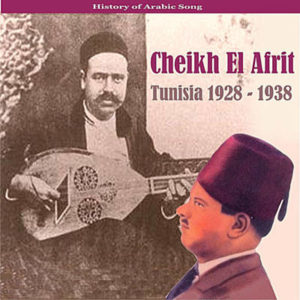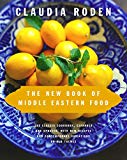A short and sweet portrait that grew out of the birthday boy’s request to have an old favorite Tunisian dish that I hadn’t made in a very long time. A friend helped us with the soundtrack, and now they’re a pair.
story
Tunisian Birthday Dinner
When I asked my husband what he wanted me to make for his birthday dinner, after an apparently detailed mental scan of 16 years of cooking (his birthday is also marks 16 years of being together), he requested a dish I hadn’t made in years: Lahma bi Betignan from Claudia Roden’s The New Book of Middle Eastern Food.
I had completely forgotten about it! I loved it, too, so I was excited to make it again, and introduce our kids to it.
The only thing missing was the music, and a way to introduce Tunisia a bit.
music
Tunisian Jazz
Not being too familiar with the music in that part of the world, I consulted friend and multi-instrumentalist of the world Ilan whose knowledge is both wide and deep.
He of course had great suggestions and introduced me to Cheikh el Afrit, whose music were actually pretty transporting.
And it lead to interesting conversation about migration patterns when our 6 year old daughter commented on similarities to some Indian music.
You can also find music-only “videos” of his music on YouTube if you’d prefer.

I’ve also added a few versions of “A Night in Tunisia,” originally written by Dizzy Gillespie in 1941-2 (when he was with the Benny Carter band), and now a jazz standard recorded by many a musician since then.
From Ella Fitzgerald to Arturo O’Farrill, and Lamberts, Hendrix and Ross to Miles Davis, it’s so fun to listen to the unique takes, all in a row. It reminds me of the lazy weekends before kids, when I would listen to the Jonathan Schwartz show, and loved when he would play several versions of a particular song. That’s now a favorite past time for the kids and I.
story
Virtual Trip to Tunisia
Introducing Tunisia to 6 and 4 year olds didn’t have to go too deep, so first off we just showed them where it was using both Google maps and then Google Earth, and talking about its location.
We skimmed Wikipedia for things that might pique the interest of the youngsters. They were wide-eyed to hear that that French is spoken there (though there is no official status), which was of particular interest because they are newly-minted Dual Language French students.
Our daughter drew comparisons of the music of Cheikh El Afrit to old Indian music she’s heard, and that launched us into a discussion about migration.
Try it yourself and see where the exploration and conversation goes. You might be surprised how much they pick up and how their curiosity steers the conversation to interesting places
recipe
Lahma bi Betignan

Adapted from the Tunisian variation of Lahma bi Betignan from Claudia Roden’s The New Book of Middle Eastern Food.

Lahma bi Betignan
Ingredients
- 2 onions, very finely chopped
- 3 tomatoes, very finely chopped
- 5 large cloves of garlic, minced
- 6 tbsp olive oil (3+3)
- 2 1/2 lbs of bone-in lamb shoulder in 2-3 inch chunks
- 1 tsp salt
- juice of half a lemon
- 1 1/2 tsp cinnamon (plus more to dust the eggplant slices)
- 1 1/2 tsp cumin
- 1/2 tsp nutmeg
- 1/2 tsp chili powder
- 2 large eggplants (Traditionally salting the eggplant is necessary, but we never do.)
- 1 can chickpeas, rinsed and drained
To Serve:
- bread
- rice
- yogurt (optional)
Instructions
- Chop the onions and tomatoes and mince the garlic.
- In a dutch oven or other heavy bottomed pot, on medium heat, fry the onions in 3 tbsp of olive foil until golden
- Add the garlic and stir until fragrant, then add the lamb and fry until well-browned on all sides.
- Add the tomatoes and a tad of water, just enough to be able to see the bottom and scrape up the browned bits of frond.
- When the bottom of the pan is free from frond, add the salt, lemon juice, cinnamon, cumin, chili and nutmeg and stir
- Add water just until the meat is barely covered and bring to a boil. Reduce the heat and simmer gently, covered for about 1.5 hours, or until the meat is very tender.
- Meanwhile, preheat oven to 375 and slice the eggplants into 1/2 inch-thick rounds.
- Place the eggplant rounds on a greased cookie sheet and brush them generously with oil. Sprinkle them with salt and cinnamon, and flip, doing the same to the other side. Cook for 8 minutes, flip and cook for another 8 minutes, or until the eggplant is very soft and begins to brown. When done, remove from oven and cover to keep warm and stay soft/moist. Cut into 1 inch chunks before adding to the stew.
- Once the meat has been stewing for at least an hour, add the eggplant and cook for 5-10 minutes until it begins to come together. Then add the can of chickpeas and continue cooking until it has thickened and meat is fully cooked. Taste and add salt or spices if necessary.
- Serve with bread or rice, and stir in plain yogurt if your kids think it’s spicy.